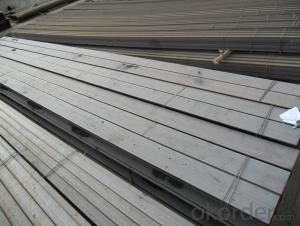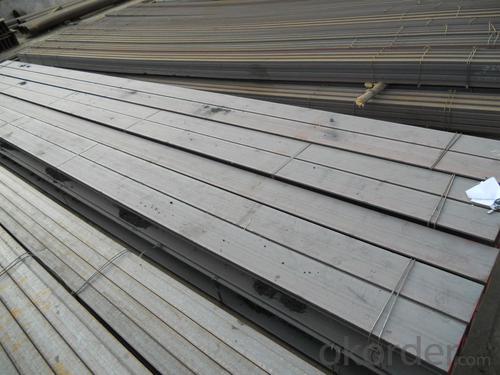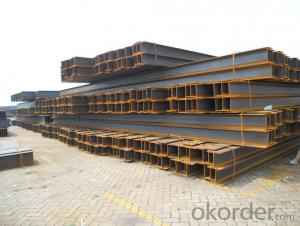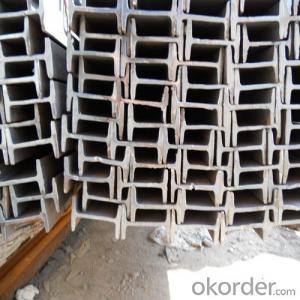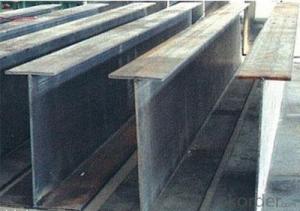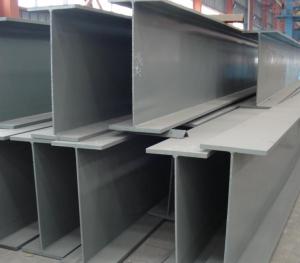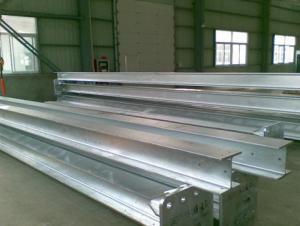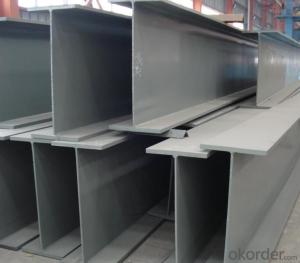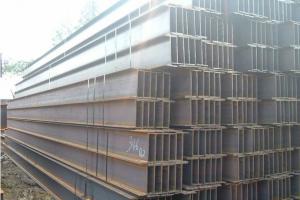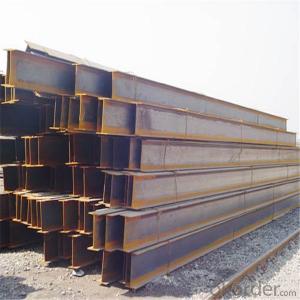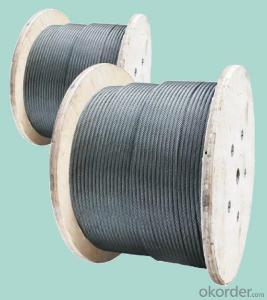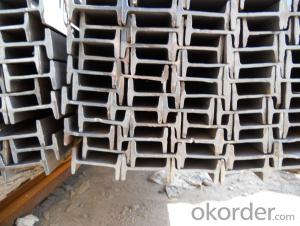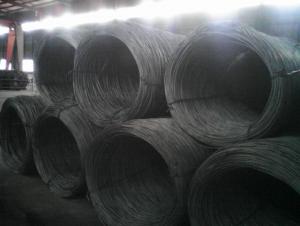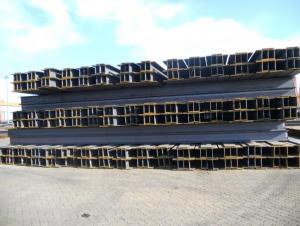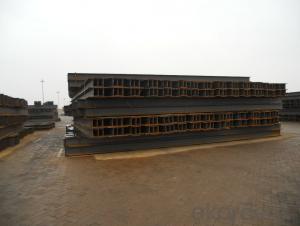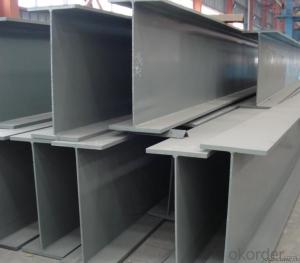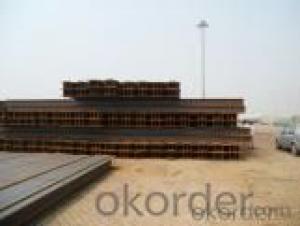Hot Rolled Steel H-Beam using for Medium Scale Bridge
- Loading Port:
- Tianjin
- Payment Terms:
- TT OR LC
- Min Order Qty:
- 10000 m.t.
- Supply Capability:
- 250000 m.t./month
OKorder Service Pledge
OKorder Financial Service
You Might Also Like
Specification
Product Description:
Product Description:
OKorder is offering Hot Rolled Steel H-Beam using for Medium Scale Bridge at great prices with worldwide shipping. Our supplier is a world-class manufacturer of steel, with our products utilized the world over. OKorder annually supplies products to European and Asian markets. We provide quotations within 24 hours of receiving inquirys and guarantee competitive prices.
Product Applications:
Hot Rolled Steel H-Beam using for Medium Scale Bridge are widely used in the construction of buildings and bridges, and the manufacturing, petrochemical, and transportation industries.
Product Advantages:
OKorder's Hot Rolled Steel H-Beam using for Medium Scale Bridge are durable and resist corrosion.
Main Product Features:
· Premium quality
· Prompt delivery & seaworthy packing (30 days after receiving deposit)
· Corrosion resistance
· Can be recycled and reused
· Mill test certification
Product Specifications:
Specifications of Hot Rolled Steel H-Beam for Medium Scale Bridge
1. Standard: GB700-88, .
2. Grade: Q235, SS400 or Equivalent
3. Length:10m, 12m as following table
4. Invoicing on theoretical weight or actual weight as customer request
5.Payment: TT or L/C
6. Sizes:
SIZE(mm) | DIMENSION(kg/m) |
150*150 | 31.1 |
200*100 | 20.9 |
248*124 | 25.1 |
250*125 | 29 |
Usage & Applications of Hot Rolled Steel H-Beam using for Medium Scale Bridge
Commercial building structure ;Pre-engineered buildings; Machinery support structure; Prefabricated structure; Medium scale bridges; Ship-building structure. etc.
Packaging & Delivery of Hot Rolled Steel H-Beam using for Medium Scale Bridge
1. Packing: it is packed in bundles by steel wire rod
2. Bundle weight: not more than 3MT for bulk vessel; less than 3 MT for container load
3. Marks:
Color marking: There will be color marking on both end of the bundle for the cargo delivered by bulk vessel. That makes it easily to distinguish at the destination port.
Tag mark: there will be tag mark tied up on the bundles. The information usually including supplier logo and name, product name, made in China, shipping marks and other information request by the customer.
If loading by container the marking is not needed, but we will prepare it as customer request.
4. Transportation: the goods are delivered by truck from mill to loading port, the maximum quantity can be loaded is around 40MTs by each truck. If the order quantity cannot reach the full truck loaded, the transportation cost per ton will be little higher than full load.
5. Delivered by container or bulk vessel
Production flow of Hot Rolled Steel H-Beam using for Medium Scale Bridge
Material prepare (billet) —heat up—rough rolling—precision rolling—cooling—packing—storage and transportation
FAQ:
Q1: Why buy Materials & Equipment from OKorder.com?
A1: All products offered byOKorder.com are carefully selected from China's most reliable manufacturing enterprises. Through its ISO certifications, OKorder.com adheres to the highest standards and a commitment to supply chain safety and customer satisfaction.
Images:
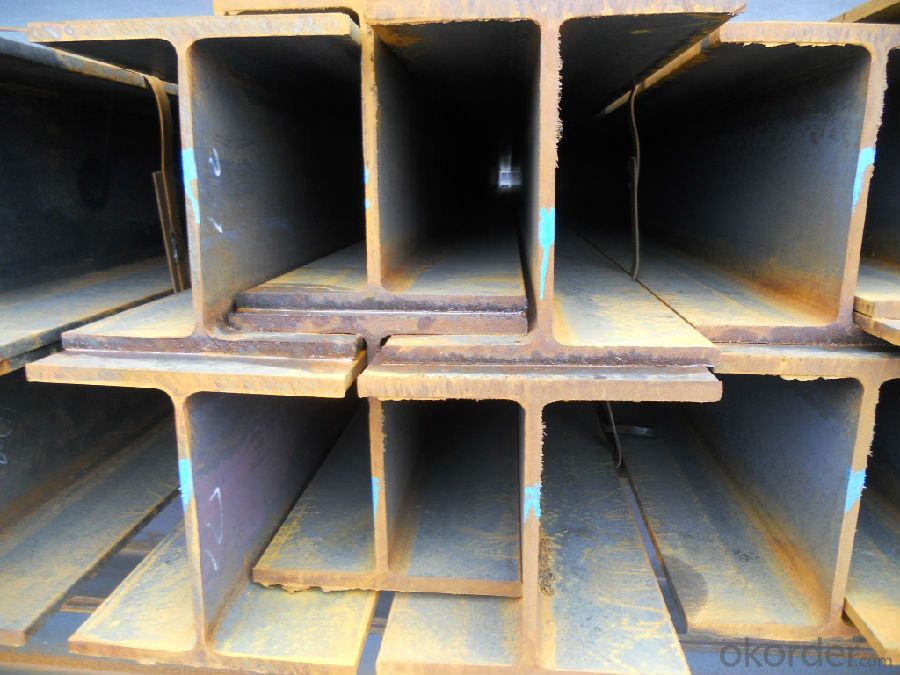
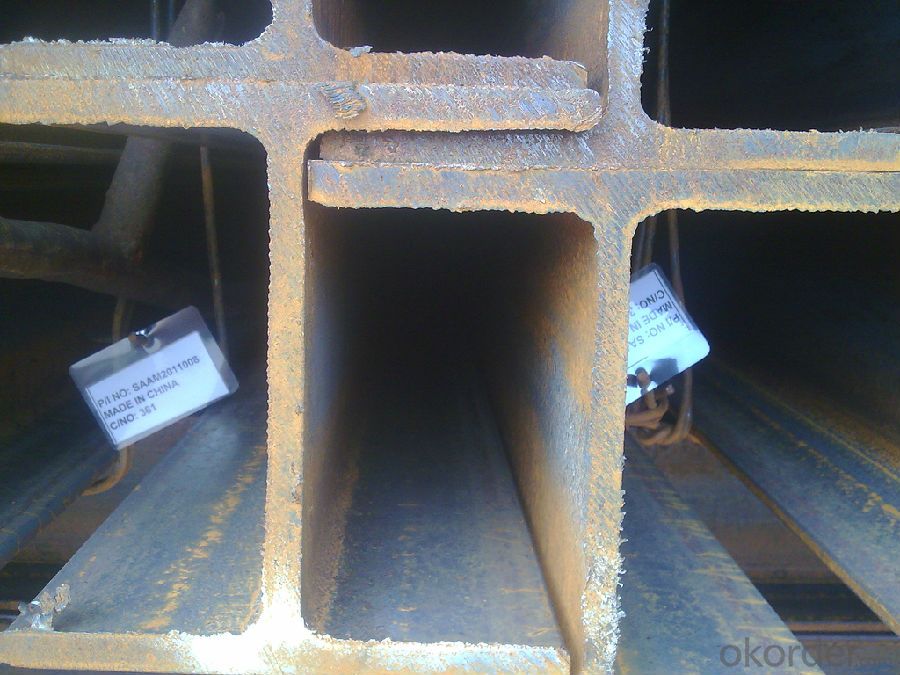
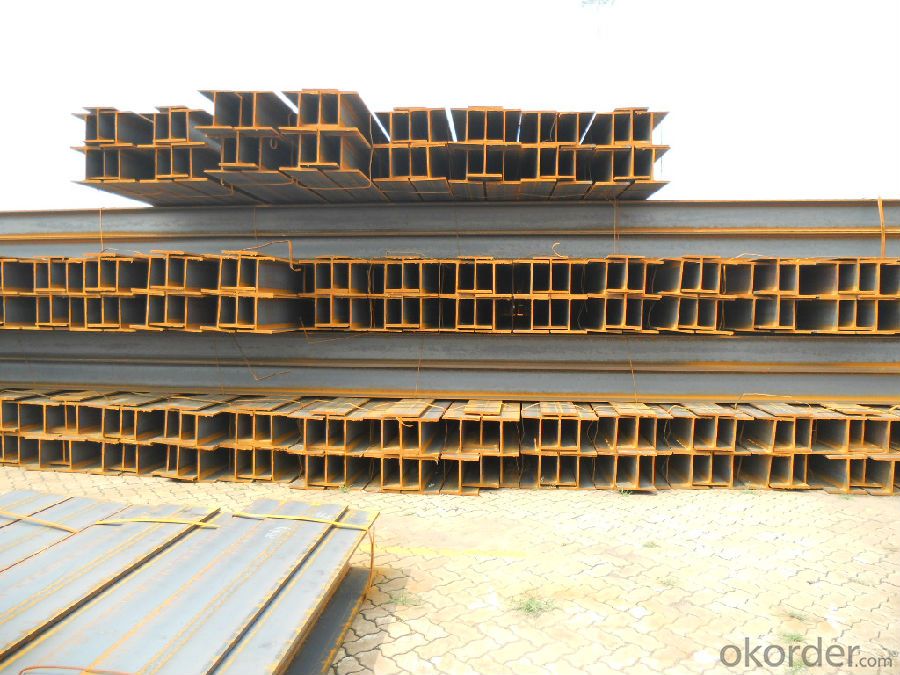
- Q: Can steel H-beams be used in the construction of religious buildings or churches?
- Religious buildings or churches can indeed utilize steel H-beams for their construction. The employment of steel H-beams in construction projects offers numerous benefits, such as their exceptional strength, durability, and versatility. These beams provide a robust framework capable of supporting the structure's weight and withstanding diverse weather conditions. Moreover, steel H-beams can be easily fabricated and tailored to suit different architectural designs, allowing for flexibility in the construction of religious buildings or churches. Consequently, their popularity in construction projects has grown due to their cost-effectiveness, sustainability, and ability to comply with building codes and safety requirements. Ultimately, the decision to incorporate steel H-beams in the construction of religious buildings or churches depends on various factors, including the project's architectural vision, structural demands, and budgetary considerations.
- Q: Which is better, I-beam or HN steel?
- Mainly to see what you mean, I-beam and HN steel beams of what size, or look at section size. Generally I-beam is stronger
- Q: How do steel H-beams contribute to the load-bearing capacity of a structure?
- The load-bearing capacity of a structure is enhanced by steel H-beams due to their unique design and material properties. The H-shaped cross-section of these beams offers a larger surface area compared to other structural shapes, resulting in increased strength and load-carrying capacity. To resist bending and shear forces, the flanges, which are the top and bottom horizontal sections of the H-beam, are specifically designed. They serve as a platform to evenly distribute the load along the length of the beam, ensuring efficient load transfer. The web, or vertical section, connects the flanges and adds rigidity and stability to the beam. Steel, being a robust and durable material, further improves the load-bearing capacity of H-beams. It possesses high tensile and compressive strength, enabling the beams to withstand heavy loads and resist deformation. Additionally, steel exhibits excellent resistance to fire, corrosion, and other environmental factors, guaranteeing the long-term structural integrity of the building. The load-bearing capacity of H-beams is also influenced by their versatility. They can be manufactured in various sizes and lengths, making them suitable for a wide range of applications and structural needs. Furthermore, H-beams can be easily connected through welding or bolted connections, allowing the construction of intricate and sturdy frameworks. In conclusion, steel H-beams play a crucial role in enhancing the load-bearing capacity of a structure by providing a robust and efficient structural component. Their unique design, combined with the strength and durability of steel, enables them to support heavy loads and ensure the overall stability and safety of the building.
- Q: Can steel H-beams be used for healthcare facilities or hospitals?
- Healthcare facilities or hospitals can indeed utilize steel H-beams. These H-beams are commonly employed in construction due to their robustness, endurance, and capacity to bear heavy loads. In healthcare facilities or hospitals, steel H-beams find application in various ways. They can provide structural support for the building, create partitions or walls, support overhead equipment, and even facilitate the construction of specialized features like surgical theaters or MRI rooms. The adaptability of steel H-beams allows for flexible and efficient design options to cater to the specific requirements of healthcare facilities or hospitals, ensuring the structures' safety and stability. Moreover, steel, being a non-combustible material, adds an extra layer of safety and complies with the stringent fire safety regulations often mandated in healthcare settings. All in all, steel H-beams present a dependable and practical solution for construction in healthcare facilities or hospitals.
- Q: Specification for splicing length specification of H steel in steel structures
- The width of the splice shall not be less than 300mm and shall not be less than 600mm"
- Q: What are the different methods of joining Steel H-Beams together?
- There are several methods of joining steel H-beams together, including welding, bolting, and using connectors such as steel plates or angle brackets.
- Q: How do steel H-beams perform in high-temperature environments such as industrial furnaces?
- Steel H-beams perform well in high-temperature environments like industrial furnaces due to their excellent thermal conductivity and high melting point. They can withstand the extreme heat, maintain their structural integrity, and provide reliable support and stability under such conditions.
- Q: Can steel H-beams be used in underground or foundation construction?
- Yes, steel H-beams can be used in underground or foundation construction. They are commonly used as structural elements in construction due to their high strength and durability. Steel H-beams provide excellent load-bearing capabilities, making them suitable for supporting heavy loads in underground structures or as foundational supports.
- Q: What are the weight capacities of steel H-beams?
- The weight capacities of steel H-beams can differ based on various factors including the beam's size and dimensions, the grade of steel utilized, and the particular application or load demands. Typically, steel H-beams are engineered to endure substantial loads and possess significant weight capacities. They find frequent employment in construction and engineering ventures where structural robustness is paramount. To ascertain the weight capacity of a particular steel H-beam, it is crucial to refer to the manufacturer's specifications or seek guidance from a structural engineer capable of providing precise calculations based on the project's specific requirements.
- Q: Can Steel H-Beams be used in airport or transportation terminal construction?
- Yes, Steel H-Beams can be used in airport or transportation terminal construction. Steel H-Beams are often used in construction projects that require structural support, such as airports and transportation terminals. These beams provide excellent load-bearing capabilities and can withstand heavy loads, making them suitable for building large structures like airports and terminals. They are also known for their durability and long lifespan, which is crucial in infrastructure projects. Additionally, Steel H-Beams can be easily fabricated and installed, allowing for efficient construction processes. Overall, Steel H-Beams are a popular choice in airport and transportation terminal construction due to their strength, durability, and ease of installation.
Send your message to us
Hot Rolled Steel H-Beam using for Medium Scale Bridge
- Loading Port:
- Tianjin
- Payment Terms:
- TT OR LC
- Min Order Qty:
- 10000 m.t.
- Supply Capability:
- 250000 m.t./month
OKorder Service Pledge
OKorder Financial Service
Similar products
Hot products
Hot Searches
Related keywords
